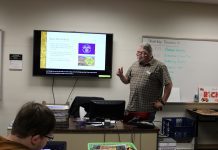355 Harris Ave.

Diabetes mellitus, which is often referred to simply as “diabetes,” is a chronic disease characterized by high levels of blood sugar (glucose). In 2021, it was estimated to affect over 500 million adults globally; this number is projected to rise to nearly 800 million by 2045. If left untreated, diabetes can lead to serious acute and long-term health problems. In fact, the World Health Organization identifies diabetes as one of the top ten disease-related causes of death worldwide.
The goal of this course is to provide participants with a greater understanding of the mechanisms underlying this disease. We first cover the body’s normal, healthy regulation of glucose. Then, with this baseline information in place, participants learn how genetics or certain lifestyles lead to disruption of this regulation, resulting in the disease state. An understanding of the processes underlying this disease provides greater insight into how certain treatments mitigate the damaging effects of diabetes.
Instructor: Mary Chamberlin
Dr. Mary Chamberlin is a professor emerita at Ohio University, where she taught undergraduate, graduate and medical-school physiology. She has conducted research on the physiology and metabolism of mammals, fish, marine invertebrates and insects, and she has served as a program director at the National Science Foundation.







































